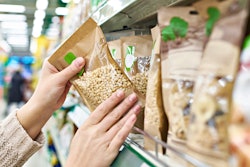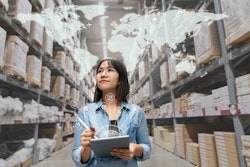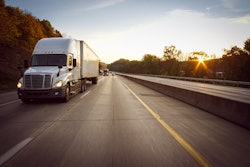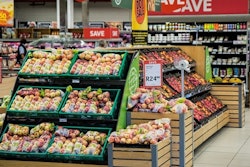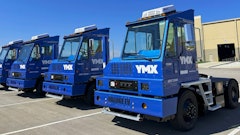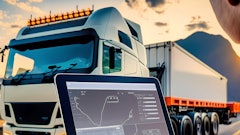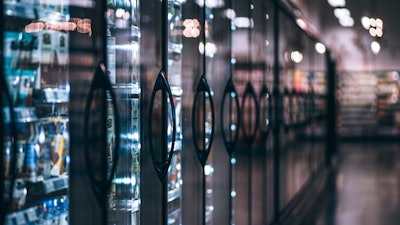
Walmart and Instacart have recently partnered to try to compete with Amazon-Whole Foods and their current influence over online food shopping, and have thus entered the market for grocery delivery that has grown to prominence in light of health safety concerns in the midst of the Coronavirus disease (COVID-19) pandemic.
Since the COVID-19 outbreak, around 80% of U.S. consumers have reported using online grocery delivery services. With Amazon’s same-day delivery of Whole Foods products and with Kroger’s rapidly expanding delivery network, many stores are worried about competing with the rising grocery delivery options.
The COVID-19 problem
The COVD-19 pandemic has brought on an onslaught of paradigm changes that have proliferated through basically every aspect of life and to every corner of industry. Even long after the moments of crisis and strict social distancing start to pass, consumers will likely still see grocery shopping as a potential health risk. These consumer fears should be expected to linger and persist for years, and thus grocery stores need to start to strategize long-term solutions that will be able to take these changes in consumer behavior and patters in traffic to physical stores into thoughtful consideration.
Grocery stores right now are experiencing issues that are quite analogous to those that stadiums and arenas face in the realm of sports and entertainment. Just as it has always been more convenient to watch an event from the comfort of one’s home, it has always been more convenient to simply order something from your phone or laptop and wait for it to be delivered to your home.
The counter-strategy then needs to focus around improving the live experience. In sports, this means highlighting the excitement of experiencing action live and in-person, playing-up the importance of “being there” and being “in the moment.” For the grocery industry, this could mean trying to get better products like fresher fruits and vegetables or offering better pricing than competitors.
Omnichannel solutions
At the crux of the issue, however, is the issue of time and convenience. Incorporating technology into the grocery-buying experience to help streamline, simplify and speed up the process will help encourage clients to come back out to grocery store locations and can help keep them up and running, even in the post-COVID-19 world. Using technology to implement customer-focused initiatives will play a valuable part in re-engaging customers with physical stores and in-person shopping experiences.
Omnichannel ordering options can help maintain the convenience of online ordering while still encouraging patrons to come out to physical stores. Curbside pickup allows customers to place their orders online and then pick up their food for themselves, which will help both them and the grocery store save on delivery costs. Curbside pickup also eliminates the need for an intermediary, and can help mitigate health safety concerns related to points of contact; with curbside pickup, the number of hands that one’s groceries pass through is reduced, and thus the risk of exposure to viruses or other germs is also minimized.
Food lockers also create a pickup experience that is overall better than waiting around for a delivery. Food lockers can keep hot food appropriately hot and cold food appropriately cold. This can broaden the range of the kinds of foods one shops for and ensures that quality control is back in the hands of the shopper instead of in the hands of a random stranger on a delivery app or online service.
However, grocery stores should also be thinking about ways to get people to start shopping on-site at stores again. Self-ordering kiosks can be strategically placed where heat maps reflect lower traffic density. This may be at aisle end-caps, near the butcher and bakery areas, or even outside. When outside of stores, kiosks can be safely spaced out and will allow consumers to do all their grocery shopping from one terminal. Consumers can browse options, ask questions to employees standing by and pay all at one terminal. An employee of the store can then gather the groceries and bring them out for pick-up. This minimizes human contact in the closed quarters of a store, and also creates an easy, but safe one-stop grocery shopping experience.
Seamless payment options
In fact, in general, as businesses continue to open back up and more and more people slowly start to feel comfortable with coming back out of their homes, technology will play a key role in providing patrons with ways to shop that minimize or completely eliminate human-to-human contact and exchange.
Technology also opens up a variety of possibilities for frictionless payment experiences. If a consumer wants to pay online and just pick up, groceries should try to make sure that their online ordering software allows for credit, debit and the most up-to-date mobile payment options. However, there are also contactless ordering technologies that can allow consumers to be on-site at grocery store and still pay from their phones in order to minimize unnecessary human-to-human contact.
Many groceries already have self-checkout options in addition to being checked out by a cashier, and these self-checkout lanes are likely to become more popular in the post-COVID-19 world. However, many self-checkout lanes are not equipped to accept cash payments. Cash, however, is a notoriously dirty commodity, and in the interest of health safety, grocery stores should consider implementing cash recyclers, so that consumers can shop safely for their groceries without having to worry about cash handling and exchange.
Conclusion
Although grocery delivery services might make it seem like technology is the enemy of the traditional grocery store right now, the technologies mentioned above will actually be able to help re-engage customers and bring them back out to grocery stores. Perhaps the traditional grocery store of the pre-COVID-19 era is more or less obsolete, but there are plenty of options for stores to choose from to help them bring business back and keep stores open.




